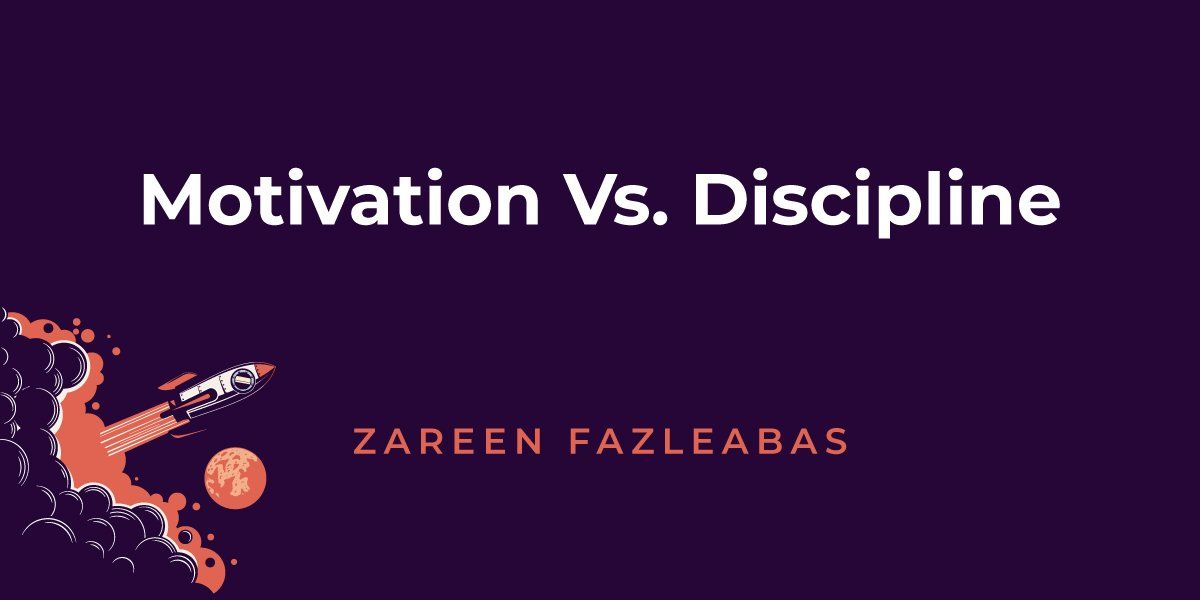Motivation Vs. Discipline
Any professional has heard it a million times (because it’s true): To truly succeed, it takes motivation and discipline. It sounds simple enough, but if there is anything I have learned, it’s that the career path can be tricky. If we are not careful, we can get lost while navigating it, especially when it comes to tackling lagging motivation and lax discipline.
Think about it: When we accomplish a task, we often feel a surge of self-satisfaction (almost like a professional adrenaline rush), which immediately buoys our level of motivation. Riding high on this rush of accomplishment, we feel we can take on anything! Spoiler alert: We cannot.
And in the times that things don’t immediately work out, we fall from that high with a harsh reality check—a rude awakening that can negatively impact motivation to the point where we feel crushed. It is at this stage that many people get stuck. This is the moment when motivation and discipline are the only remedies.
On a personal note, I went through this very thing when I finished college (a bit more on that later), and rather than allow myself to stay stuck; I allowed it to push me to explore what it means to be motivated and disciplined—two complementary, but very different things. So, let’s tackle motivation first.
Motivation at Work
Webster’s dictionary defines motivation as “a force or influence that causes someone to do something.” In simplified terms, it is the reason(s) why we do what we do. Motivation is vital to life itself because if we have no reason to do anything, honestly, what is the point of doing it? Spoiler alert: There is none.
Understandably, a lack of motivation in the workplace is akin to professional kryptonite. But don’t just take my word for it. The numbers speak for themselves, with it being reported that employees work 20% better when motivated and motivated teams accomplish 21% more.
Not only do you accomplish more, but according to the American Psychological Association, when you’re motivated, you also learn better. All of this explains why new employees often get so excited and gung-ho at the onset. They see the fruits of their labor, and it only serves to motivate them further to keep excelling straight out of the gate. Like I said before, it provides this epic rush.
However, the hard truth is that level of energy just can’t be sustained 24/7, and motivation naturally wanes for everyone (Or, I like to think of it more like an ocean tide, ebbing and flowing). Now, this is where discipline comes into play.
Discipline at Work
Discipline is defined as “a set of rules and regulations which are to be followed while undergoing any task or activity”—like a code of conduct. Just like motivation, discipline is vital. In the workplace, discipline enables us to set guidelines that foster orderliness, efficiency, punctuality, and organization and helps us focus on our tasks. Simply put: If motivation provides the desire/reason, discipline provides the action needed to fulfill that desire.
Good discipline hinges on one essential building block: establishing healthy habits. Be forewarned. This won’t happen overnight (habits take 18-254 days to really stick). But once they are established, discipline will be the direct antidote to that kryptonite-like slump you experience when your motivation wanes.
As you seek to establish your own good habits, here are a few tips that can help.
Enjoy the Ride
As I mentioned previously, I have had my struggles with motivation and discipline. I found myself (three years into my career post-college and still in the early stages of learning and developing my individual work style) feeling a bit listless professionally. I was lacking motivation and wondering why. After much self-reflection, I realized that my lofty expectations—and impossibly high bar I’d set for myself—were sabotaging me.
I was trying to go too far, too soon—trying to be ahead of my years instead of simply enjoying the process and the journey. Don’t make that same mistake.
And now? Now I believe everything I’m doing is an opportunity for growth and learning for my wide-open future. At this stage, when languishing, I push through by simply keeping disciplined and knowing that motivation will come and go.
I read somewhere, “Motivation is a luxury that comes and goes [...] You have to understand you cannot always be motivated, you have to be disciplined.” Bottom Line: Find the thing that keeps you disciplined, and the rest will follow.




